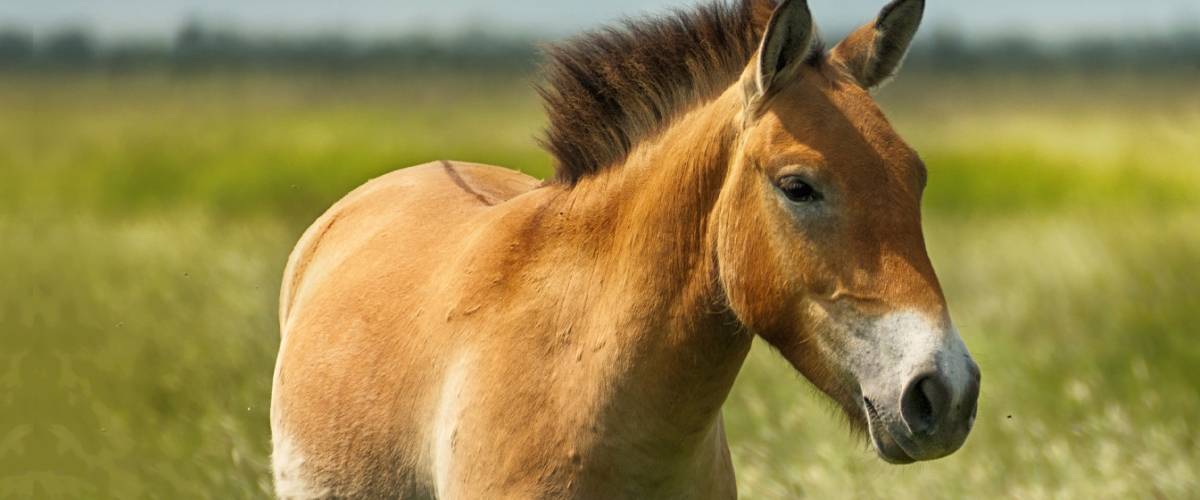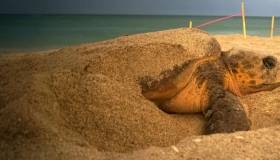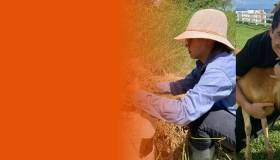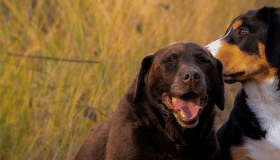
April 2, 2020 – In 1969, the Przewalski’s horse – the only surviving wild horse species that has never been successfully domesticated – was listed as extinct in the wild. After World War II, a perfect storm of events unraveled including pasture competition with livestock, mining expansion and overhunting. Together, these activities, along with some harsh winters, pushed the species toward extinction with only a few fragmented wild populations remaining in the 1940s and 50s.
The Przewalski’s horse, believed to have roamed the grasslands and desert of the Central Asian steppes for more than 160,000 years, now desperately needed human intervention to survive as a species.
“Zoos provided an important and early safety net for the Przewalski’s horse,” said Morris Animal Foundation-funded researcher Dr. Ellie Milnes, who works with these horses at the Toronto Zoo. “At one time, only a few hundred Przewalski’s horses remained in captivity, none in the wild. All these horses descended from just 12 wild-caught animals captured in the early 1900s. Today, there are about 1,900 Przewalski’s horses living in captivity or in the wild at one of several reintroduction sites. This is a huge milestone for an endangered species heading toward extinction.”
The largest wild herd of Przewalski’s horses lives in a national park in Mongolia, including now some wild-born horses. While this is a step forward for creating self-sustaining populations in the wild, Przewalski’s horses still need monitoring and assistance to ensure long-term survival.
HEALTH MONITORING VITAL TO SPECIES SURVIVAL
As with any wild species managed under human care, anesthesia often is required for veterinary care, including regular health checks. But with anesthesia comes risks, especially in horses; domestic horses have a more than 10 times greater risk of anesthesia complications than that seen in dogs and cats. While the current anesthesia protocol works well in Przewalski’s horse, Dr. Milnes believes that they can do better, especially in a captive zoo setting.
“There are no published data on anesthesia risk in Przewalski’s horses, but we can assume it’s similar to that of domestic horses,” said Dr. Milnes. “Some of the risks we see during anesthesia in Toronto Zoo’s horses include cardiovascular and respiratory issues that we closely monitor to keep the horses safe.”
Unlike many domesticated horses that tolerate IV-line placement for anesthesia, Przewalski’s horses must be darted to immobilize them for health checks. The drugs used include potent opioids, such as etorphine, commonly used in other wild equids.
“Just because this process seems to work well and gets the job done, doesn’t mean we can’t find something that is safer for the horse and the caretakers involved,” said Dr. Milnes. “A drug combination that is of interest to me and my colleagues is one currently being used to immobilize deer in the wild. This combination of drugs is associated with fewer complications for the animal, including better muscle relaxation and improved respiratory function for the darted animal.”
These findings prompted Dr. Milnes and her team to see if the same drug combination also would be effective in Przewalski’s horses during routine health care checks at the Toronto Zoo. The team is gathering preliminary data comparing a commonly used opioid drug to the newer drug combination used successfully by wildlife veterinarians. Their hope is to provide information that can be used to improve horse and human safety during anesthesia, and to inform zoo and wildlife veterinarians about anesthetic options for this species beyond traditional drug combinations.
“Every animal, no matter domestic or wild, deserves the most up-to-date care we can provide,” said Dr. Milnes. “It’s our job as veterinarians to do the best for the animal in front of us, no matter what the species, and continually improve the care we provide to keep them healthy.”
THE MAKING OF A COMEBACK
Dr. Milnes’ study is one of many Przewalski’s horse health studies funded by Morris Animal Foundation. Earlier studies focused on reproductive health to help reestablish wild populations. Thanks in part to our funding, researchers now have safe and consistent methods for collecting, freezing and thawing semen from stallions and a better understanding of mare’s ovarian responsiveness to hormone therapy.
Together, this new information helped inform assisted reproduction techniques to breed more Przewalski’s horses for conservation and release back into the wild. After decades of work, the first foal was born via artificial insemination at the Smithsonian Zoo in 2013, giving new hope for the long-term survival of this species.
Animal health studies are often the forgotten piece of conservation when bringing a species back from the edge of extinction. New information gained from these studies has helped move the Przewalski’s horse from extinct in the wild in 1970 to critically endangered in 2008 and now to endangered in 2011, as listed by the IUCN Red List of Threatened Species. Thanks to researchers like Dr. Milnes, with support from Morris Animal Foundation and our donors, we are helping Przewalski’s horses ride away from extinction.




